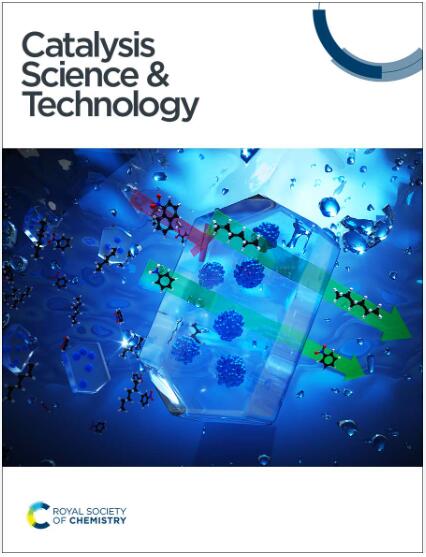Synergistically enhanced photoelectrocatalytic degradation of ciprofloxacin via oxygen vacancies and internal electric field on a NiSe2/WO3 photoanode†
IF 4.4
3区 化学
Q2 CHEMISTRY, PHYSICAL
引用次数: 0
Abstract
This study presents the in situ deposition of nickel selenide (NiSe2) on tungsten trioxide (WO3) nanorods to enhance the photoelectrocatalytic degradation of organic pollutants in water. The synthesis involves integrating nickel selenide (NiSe2) and tungsten trioxide (WO3) nanorod to form a heterojunction, utilizing a facile in situ growth method. The resulting NiSe2/WO3 heterojunction exhibits enhanced photocatalytic properties attributed to efficient charge separation, improved charge transfer dynamics, and synergistic catalytic activity created by an internal electric field and oxygen vacancy. The heterojunction demonstrates remarkable performance in the degradation of ciprofloxacin under visible light irradiation. Under optimum conditions, the photodegradation of ciprofloxacin reached 89% (0.0179 min−1) compared to pristine WO3, which only achieved 48% (0.0069 min−1) under the same conditions. The study systematically investigates the structural and morphological characteristics of the NiSe2/WO3 heterojunction and elucidates its superior photocatalytic efficacy through comprehensive experimental analyses. The primary reactive species responsible for CIP degradation were identified as photogenerated h+ and ˙OH. The successful development of the NiSe2/WO3 heterojunction holds significant promise for advancing environmentally sustainable technologies in water treatment and pollution remediation.


通过 NiSe2/WO3 光阳极上的氧空位和内电场协同增强环丙沙星的光电催化降解能力
本研究介绍了在三氧化钨(WO3)纳米棒上原位沉积硒化镍(NiSe2)以增强光电催化降解水中有机污染物的方法。该合成涉及利用一种简便的原位生长方法,将硒化镍(NiSe2)和三氧化钨(WO3)纳米棒整合形成异质结。由此产生的 NiSe2/WO3 异质结具有更强的光催化性能,这归功于高效的电荷分离、更好的电荷转移动力学以及由内部电场和氧空位产生的协同催化活性。该异质结在可见光照射下降解环丙沙星的过程中表现出卓越的性能。在最佳条件下,环丙沙星的光降解率达到 89% (0.0179 min-1),而原始 WO3 在相同条件下的光降解率仅为 48% (0.0069 min-1)。该研究系统地研究了 NiSe2/WO3 异质结的结构和形态特征,并通过全面的实验分析阐明了其卓越的光催化功效。研究发现,导致 CIP 降解的主要活性物种是光生 h+ 和 ˙OH。NiSe2/WO3 异质结的成功开发为推进水处理和污染修复领域的环境可持续技术带来了巨大希望。
本文章由计算机程序翻译,如有差异,请以英文原文为准。
求助全文
约1分钟内获得全文
求助全文
来源期刊

Catalysis Science & Technology
CHEMISTRY, PHYSICAL-
CiteScore
8.70
自引率
6.00%
发文量
587
审稿时长
1.5 months
期刊介绍:
A multidisciplinary journal focusing on cutting edge research across all fundamental science and technological aspects of catalysis.
Editor-in-chief: Bert Weckhuysen
Impact factor: 5.0
Time to first decision (peer reviewed only): 31 days
 求助内容:
求助内容: 应助结果提醒方式:
应助结果提醒方式:


